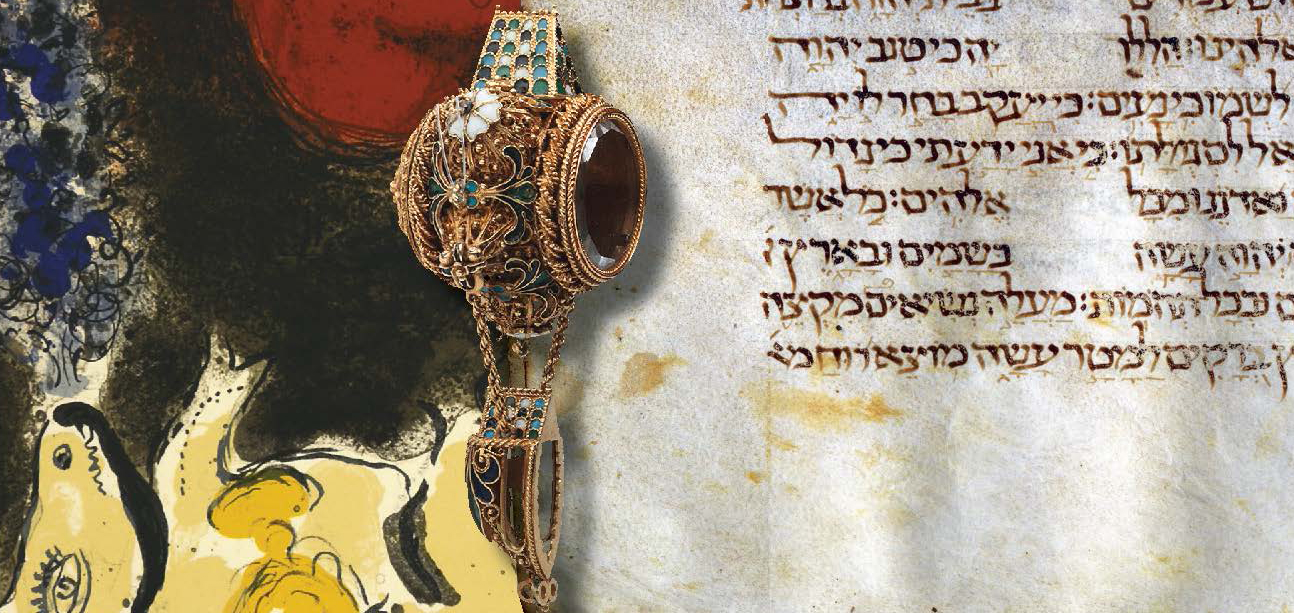
The Dead Sea Scrolls are considered the “most famous manuscript find of all time” and the “greatest archaeological discovery of the 20th century.” Today they surely rank as one of the most important and revered literary and religious manuscripts in existence.
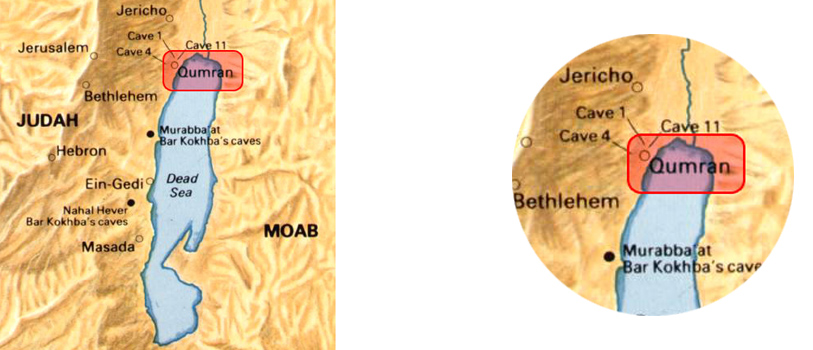
Dating from 2,000 years ago, roughly 150 B.C.E. to 70 C.E., they were found concealed in eleven caves in the Judaean wilderness around or beside the Dead Sea.
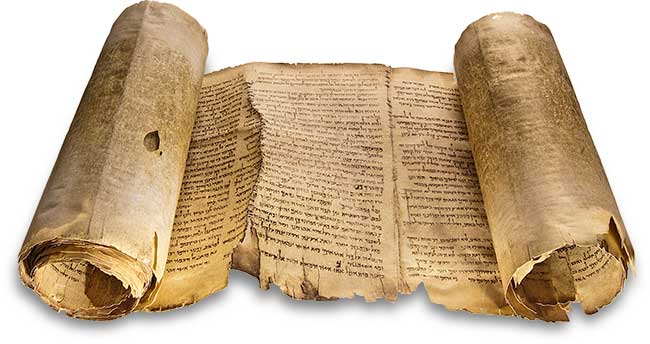
The Great Isaiah Scroll, 1QIsa The Isaiah Scroll is the only complete biblical book surviving among the Dead Sea Scrolls. Found in Cave One at Qumran in 1947, it dates from about 120 B.C.E.
Written primarily in Hebrew, the more than 10,000 manuscript fragments are also in Aramaic (the language Jesus spoke) and Greek. The scrolls include the oldest biblical texts ever found, comprising passages from every book of the Hebrew Bible except Esther. The only biblical book that is complete is Isaiah, found in a scroll from Cave I, and it is 24 feet long.
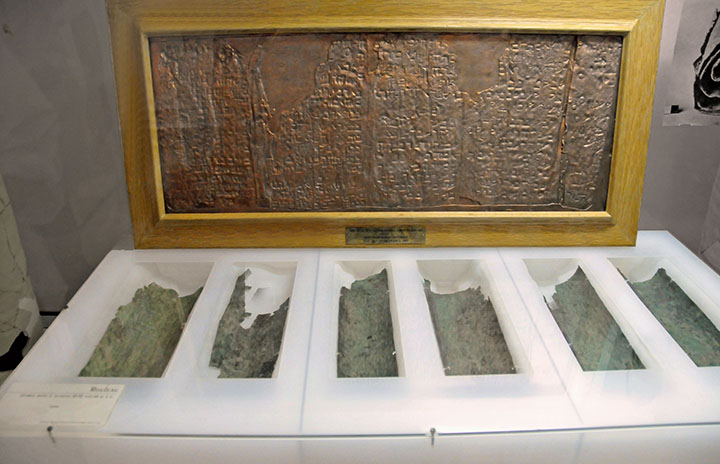 Portion of Copper Scroll at Jordan Archaeological Museum
Portion of Copper Scroll at Jordan Archaeological Museum
Perhaps the most mystifying and intriguing is the Copper Scroll from Cave III, composed on thin sheets of copper metal and containing a sort of treasure map of sixty-four spots where massive amounts of gold and silver treasure are buried in the area around the Dead Sea – still not found and the subject of several fictional thrillers. Along with biblical texts, the scrolls include documents about sectarian regulations, such as the Community Rule, and religious writings that do not appear in the Hebrew Bible. Just why, by whom, and for whom they were written and then buried still remains a subject of lively speculation among scholars.
The best contemporary description of a manuscript in use in Judaea in the period of the Dead Sea Scrolls is actually found in the Gospel of Luke (Luke 4:16-20), which describes Jesus in the synagogue: “He stood up to read, and the scroll of the prophet Isaiah was given to him; he unrolled the scroll …” and read, “and he rolled up the scroll, gave it back to the attendant, and sat down,” and began to preach.
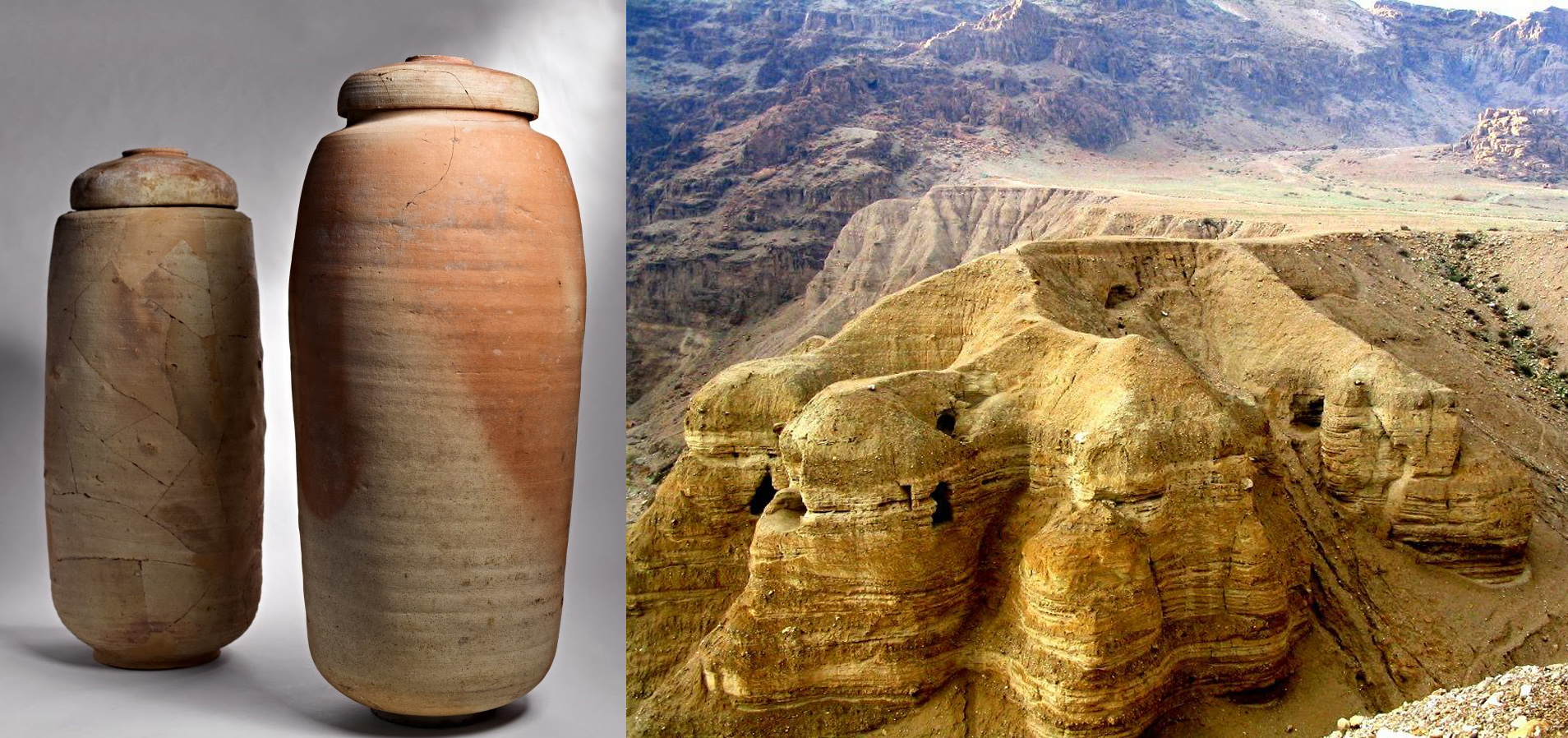
The caves where the scrolls were buried are numbered I-XI in the order of their discovery between 1947 and 1956. The initial finds from Cave I, along with jars they were housed in, were made by Bedouin shepherds, who brought them eventually to a Syrian Christian dealer in antiquities in Bethlehem, Khalil Iskander Shahin. It is probable that most of the recent discoveries of Dead Sea Scrolls, including the present fragments, are from Cave IV. This cave is in the cliffs to the south-west of the site of Qumran, from which it is separated by a deep ravine. An old Bedouin is said to have remembered finding the cave as a young man, and his recollections led his younger compatriots to the site, apparently in August 1952. They let themselves down by a rope and entered the cave, where they unearthed the remains of masses of matted manuscript fragments, which they took, as their predecessors had done, to Kando in Bethlehem.
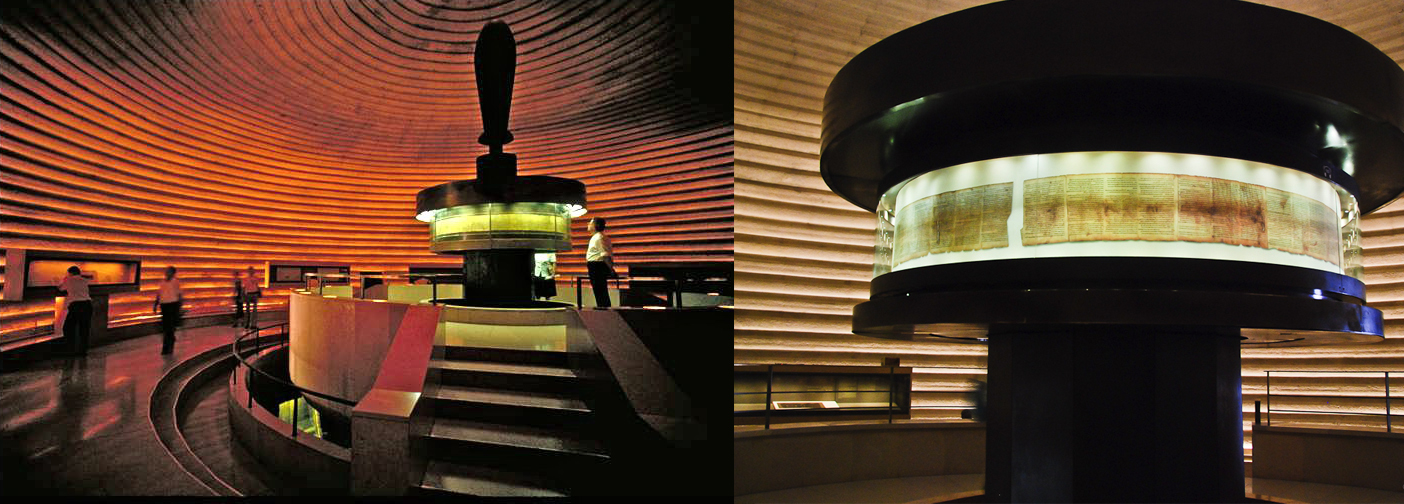 Shrine of the Book at the Israel Museum
Shrine of the Book at the Israel Museum
It seems almost inconceivable in the twenty-first century that unknown Dead Sea Scrolls could still appear on the market. The last publicly prominent sale of Dead Sea Scrolls occurred on June 1, 1954, when four finds from Cave I, including the Isaiah Scroll, were offered for sale privately and advertised in the Wall Street Journal. They were bought immediately by telegram by the state of Israel for $250,000. These items are now in the Shrine of the Book in the Israel Museum in Jerusalem. The most recent publicly recorded sale of Dead Sea Scrolls was in 2009, when Azusa Pacific University in California acquired five fragments for a price reported in the Los Angeles Times of nearly $2,500,000. Other fragments exist worldwide in public and private collections: the University of Chicago, the Museum of the Bible, the Southwestern Baptist Theological Seminary, and Martin Schøyen in Norway, to name the most significant collections.

High-resolution multi-spectral images of 3 fragments of the Dead Sea Scrolls, Israel, circa 50 B.C.E.- 60 C.E.
Any appearance on the market of unpublished Dead Sea Scrolls is special news. The present group of five fragments, of which two are fragment sets, are among the so-called “W” fragments. They were acquired by their American owner from the legal heirs of Khalil Iskander Shahin in 2002, and they are almost certainly from Cave IV. Scrolls from Cave IV were not kept in jars but housed on shelves in ancient-library fashion, identified by dangling tags. Recently completed high-resolution multi-spectral imaging of these fragments has revealed some Hebrew lettering but the texts are have not yet been identified. The images will be studied by the leading Dead Sea Scrolls scholars in Israel and the United States this year, and will be published as early as 2017.
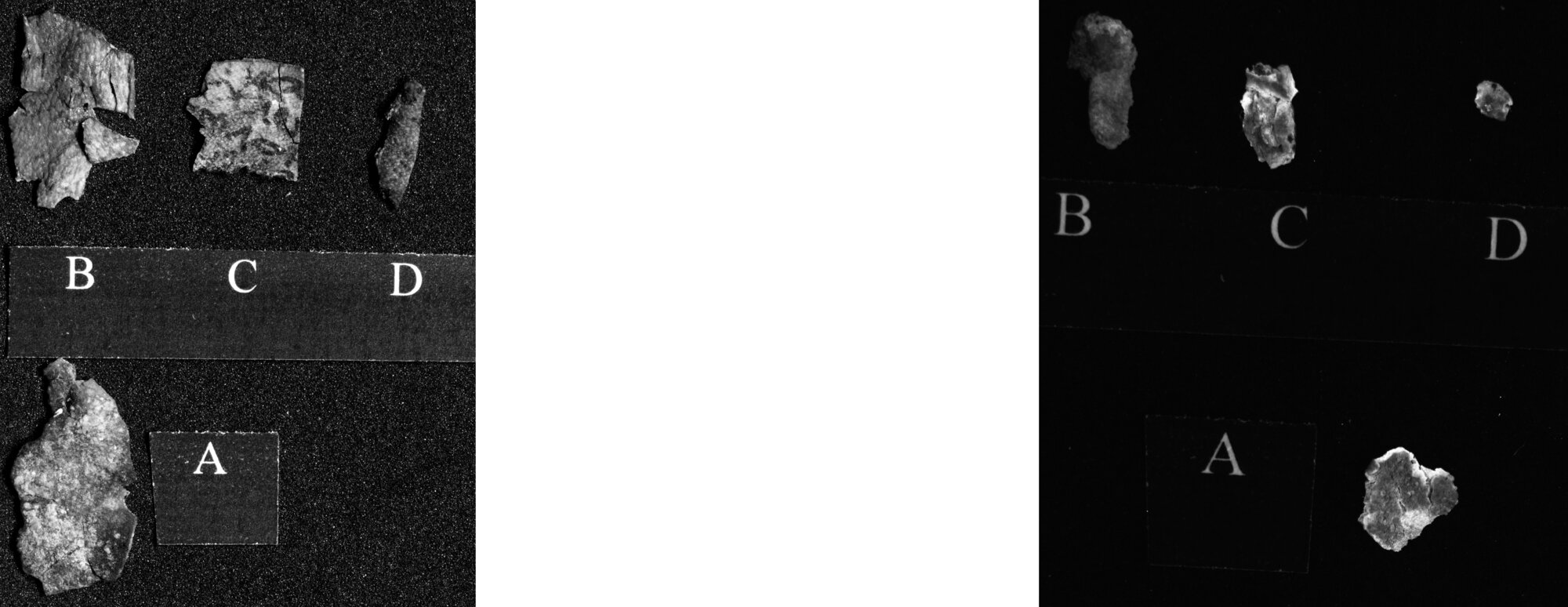
High-resolution multi-spectral images of 2 fragments sets of the Dead Sea Scrolls, Israel, circa 50 B.C.E. - 60 C.E.
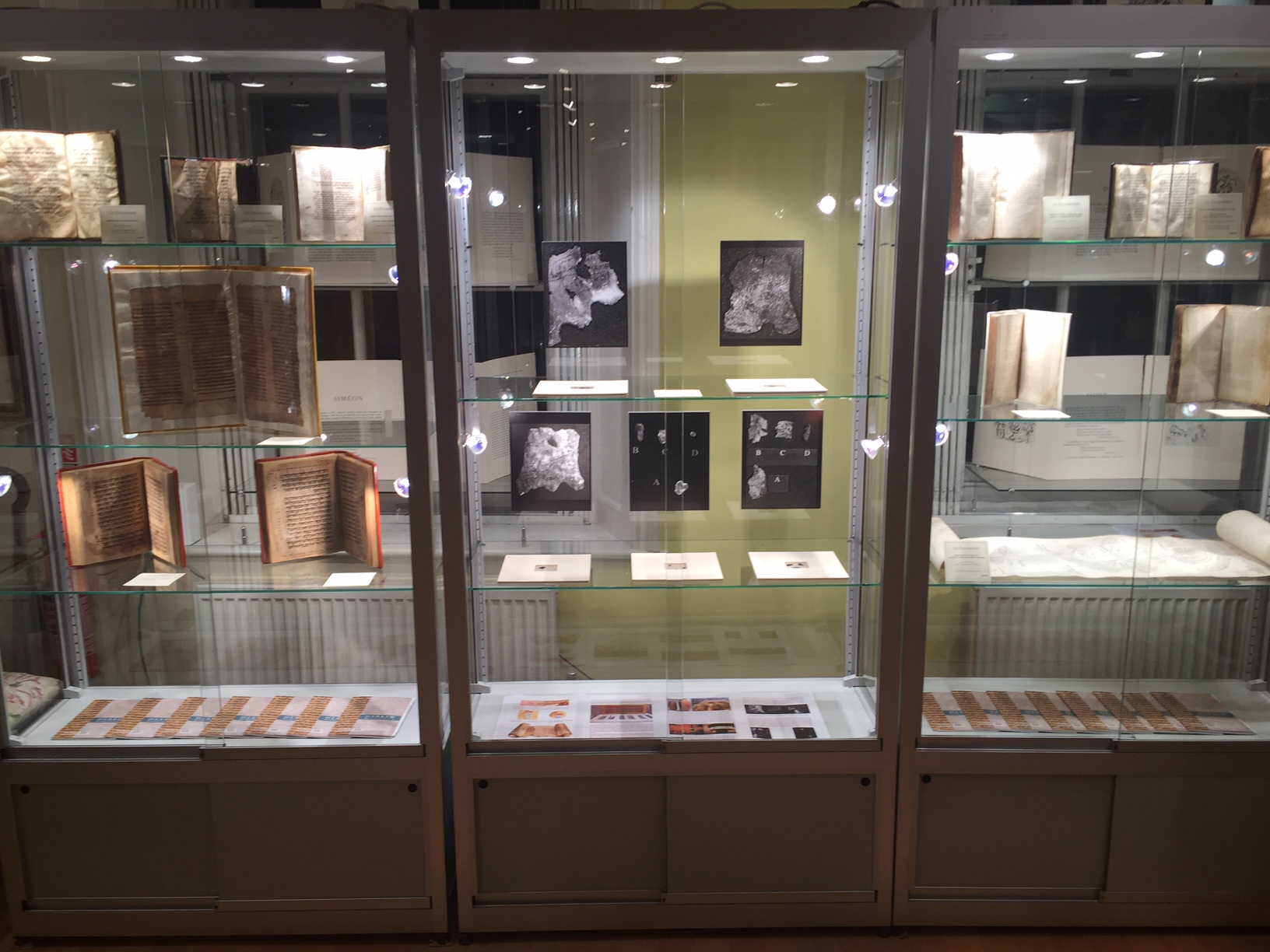
These unpublished and previously unknown fragments will be on exhibit in “2000 Years of Jewish Culture” organized by Les Enluminures and Shapero Rare Books at 32 St. George St., London W1, opening on November 2. The asking price is $1,000,000.
